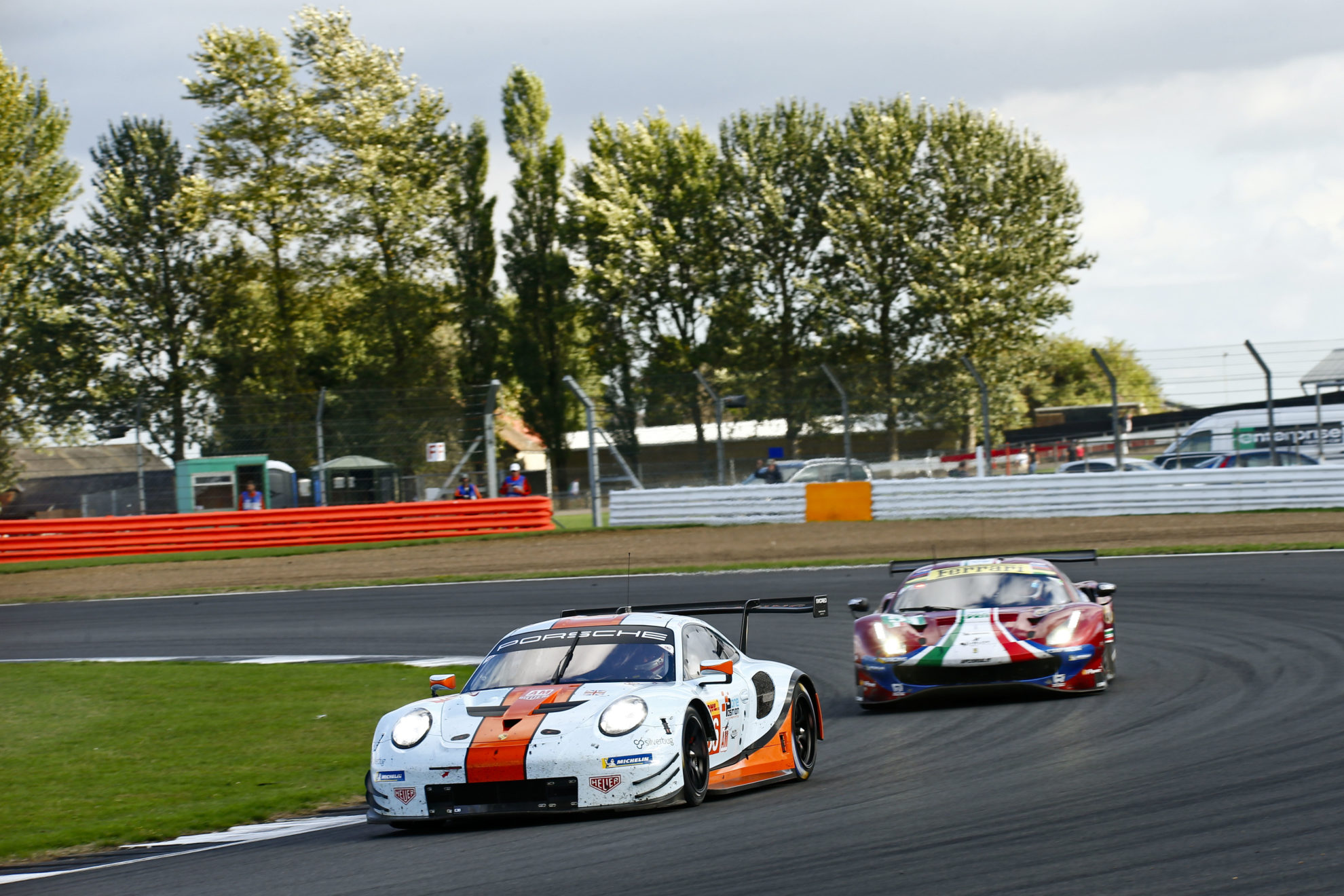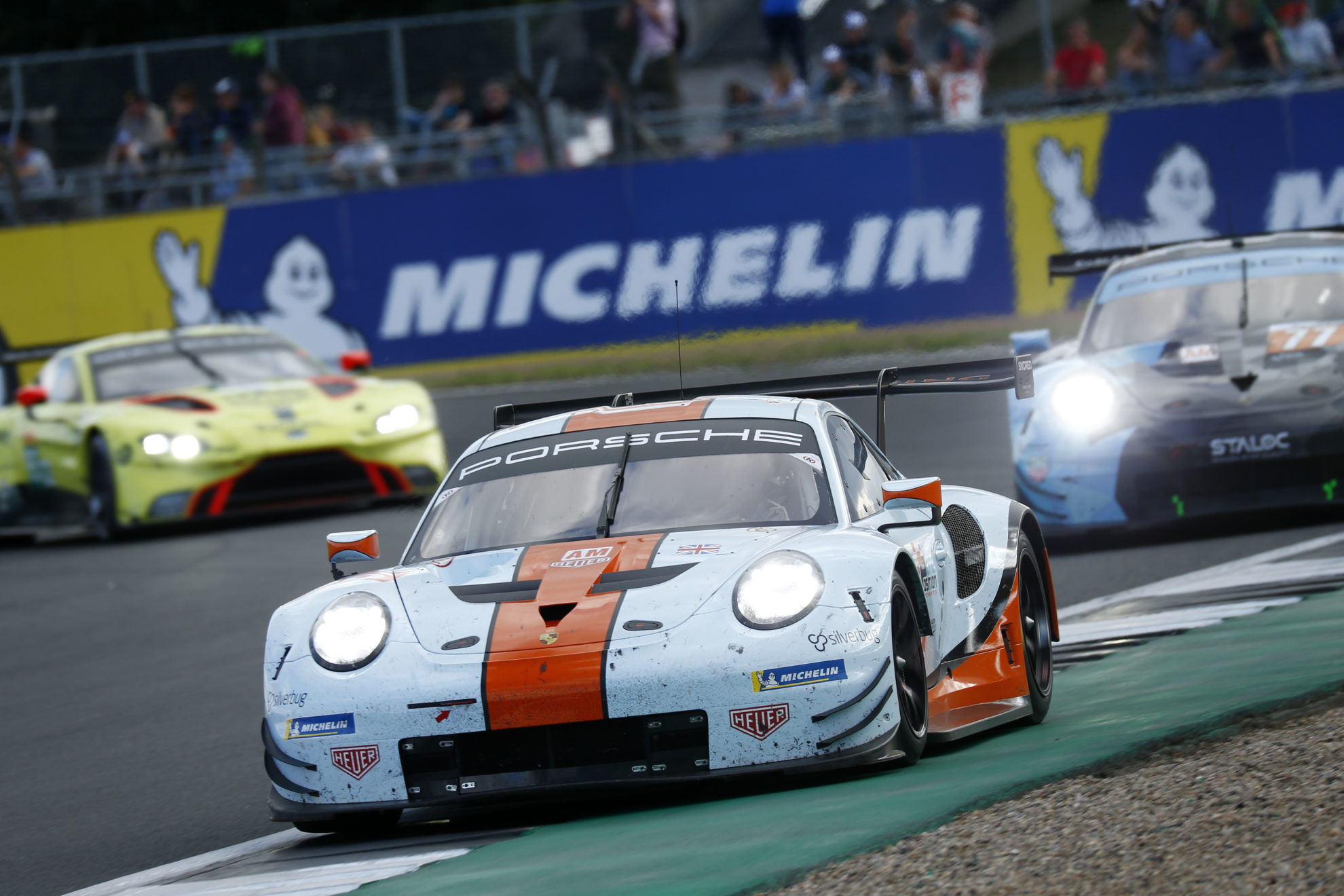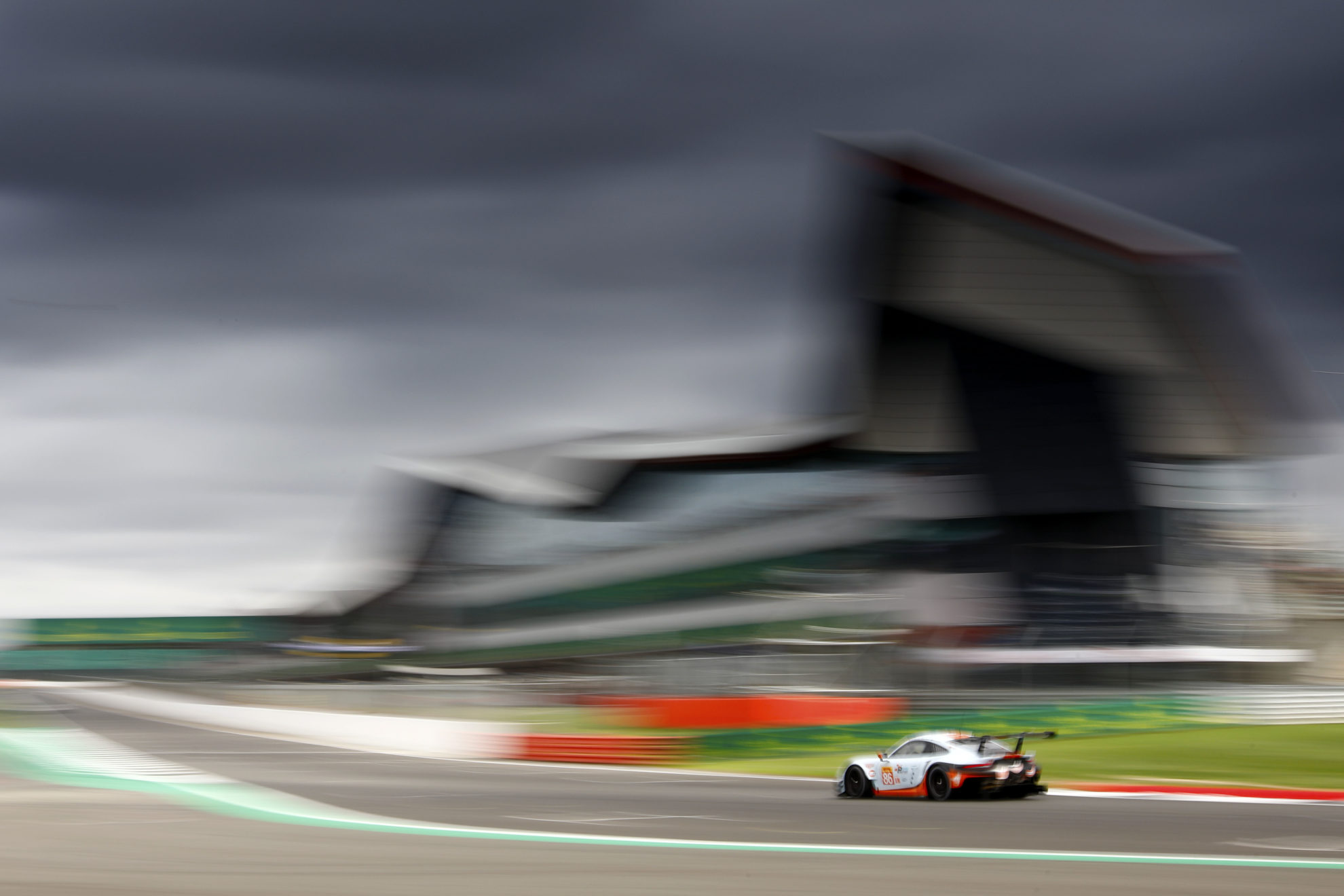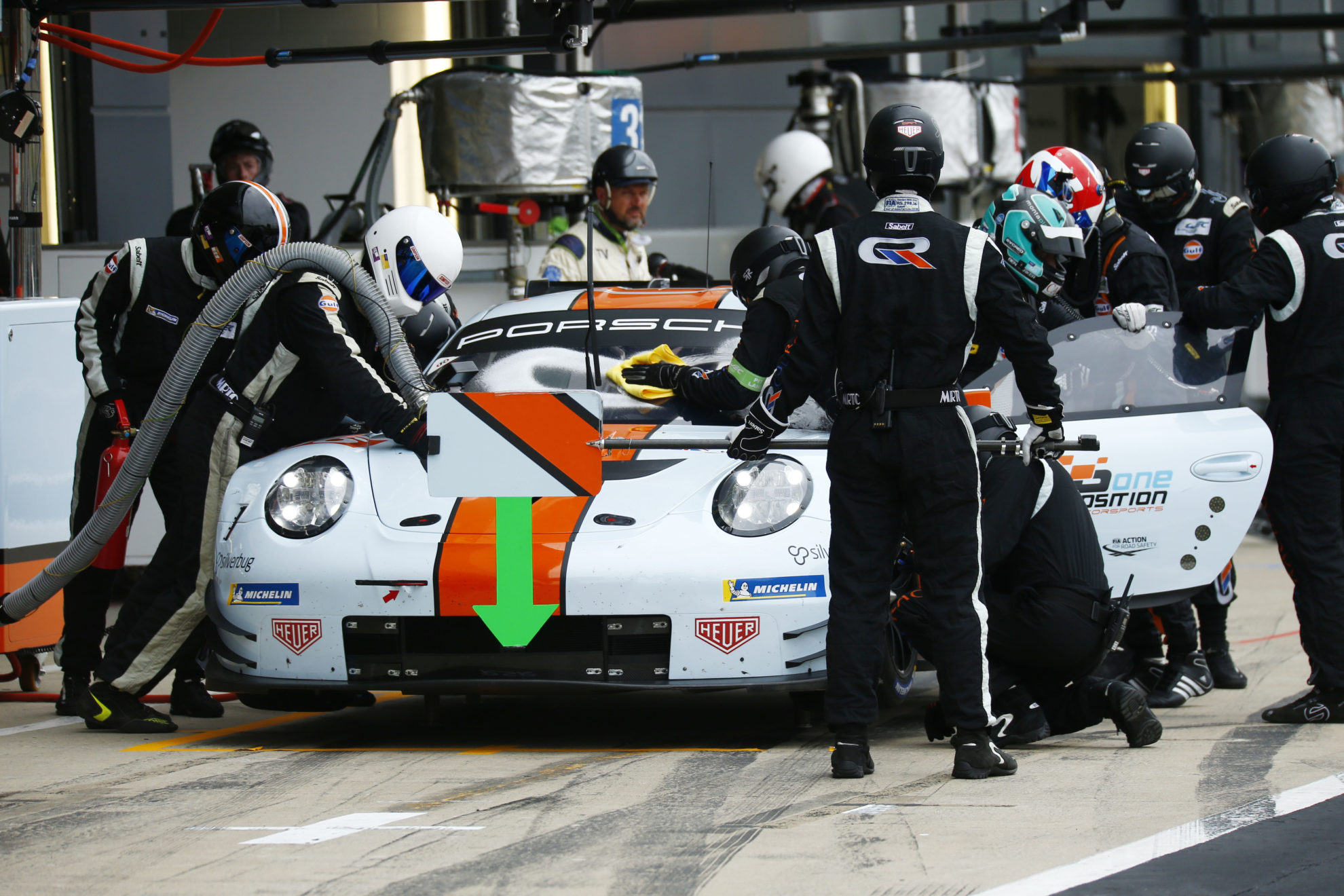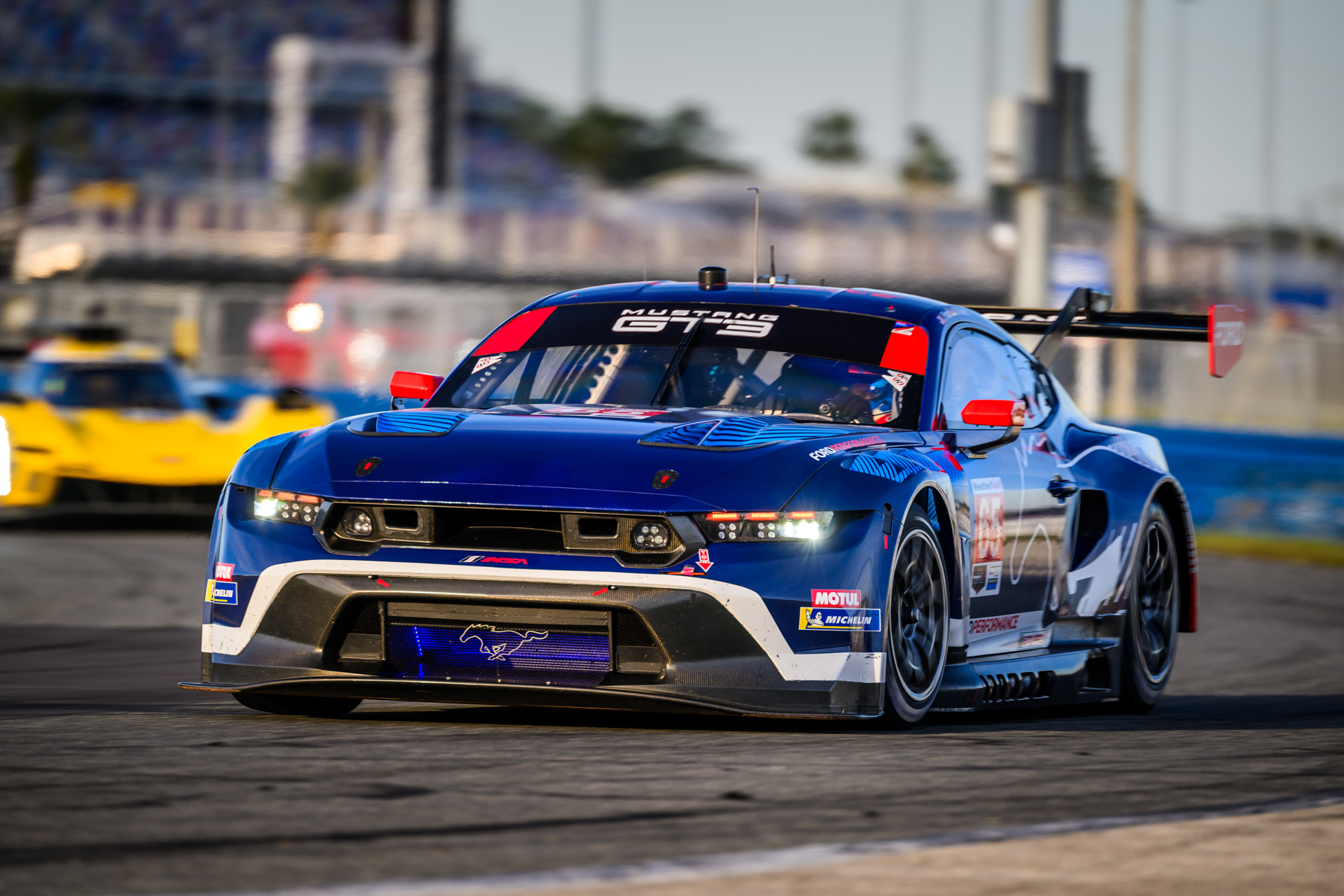Ben Barker took a handful of valuable championship points and the continued belief that Gulf Racing is moving in a positive direction from a tough weekend on home soil at Silverstone.
The Briton and team-mates Mike Wainwright and Alex Davison were kept busy throughout the meeting following the decision to contest Saturday’s European Le Mans Series round alongside their regular FIA World Endurance Championship commitment on Sunday, but the combined ten hours of racing provided further valuable data as Gulf Racing continues to hone its #86 Porsche 911 RSR into an LMGT-Am contender.
Keen to put as much mileage as possible into the development of its iconic blue-and-orange machine ahead of the remainder of the WEC’s ‘super season’, Barker and his colleagues trekked between the two separate pit-lanes at the Home of British Motorsport on a packed weekend of international sportscar racing, but were ultimately left with scant reward as some typical summer conditions conspired against them.
Just as a one-off entry for the Paul Ricard round of the European Le Mans Series was designed to capitalise on the proximity of a WEC event at the same venue, so Silverstone gave both the drivers and pit crew a lot of useful track time, despite all having to repeatedly adjust to the Dunlop tyres preferred by the European championship. Barker, however, appeared unfazed by the additional workload, revelling in the early performance of the ELMS-spec #86 to post fastest time in its GT class during opening practice. Although the car never quite hit those heights again, Barker was able to complete a Porsche 1-2-3 in qualifying for the European event, lapping just a tenth off the class pole to put Gulf Racing in good position for its home race.
Between ELMS commitments, Barker, Wainwright and Davison would swap back to the WEC car, with the #86 again showing well in free practice before the series’ averaged team time approach to qualifying proved a little disappointing, despite Barker again lapping within touching distance of the fastest times on his run.
“ELMS qualifying was very positive,” Barker enthused, “Our relative lack of familiarity with the Dunlop tyre obviously counted against us, so there may even have been more time in the car, but we have to be pleased with third in class, especially being so close to the pole time. By contract, WEC qualifying was a frustrating experience, as we opted for a different compound of Michelin tyre to normal and missed its narrow operating window in terms of temperature. It was a gamble that was clearly worth taking given the conditions, but only resulted in a lot more oversteer than we had bargained for.”
Finding the right balance also proved to be a problem later in the day when, having switched back to ELMS duty, Barker and Co found that the mandatory Dunlops were also struggling to last the pace in Saturday afternoon’s four-hour race. With a first lap melee delaying the #86 and costing Wainwright valuable places, the team was playing catch-up from the very start and, despite both Barker and Davison doing their utmost to keep the car in touch with the class leaders, fifth place was their ultimate reward.
“We struggled to get both the tyres and the overall platform working at their optimum,” Barker admitted, “Changes we made ahead of the race were maybe not the best and the race pace wasn’t as good as we had hoped for, so it was a tough afternoon that should probably have given us more, especially after qualifying so close to the front.”
Sunday’s WEC race proved to be a little more encouraging for the Gulf team, despite the shifting weather patterns continuing to cause them a few headaches. Although warm and windy conditions prevailed, the #86 again proved a frustrating beast to tame, with all three drivers chasing better rear-end balance as their tyres persistently overheated and began to blister.
“The pace at the start of a stint was good, but quickly dropped away through the duration of the run,” Cambridge native Barker explained, “Silverstone is a bit of an outlier in terms of what it asks of the tyres, being longer, faster and of higher load than most of the circuits on the schedule, so we’re hoping that that might be a contributing factor to our performance.”
Although the majority of the six-hour WEC race was ‘clean’ for the #86, its missing pace eventually left Barker with too much to do on the final stint before bringing the car across the line sixth in class.
“Mike and Alex drove well to keep us on the lead lap for the majority of the race,” Barker insisted, “but eventually the difference in performance told. A top five result looked possible until the final 30 minutes, but we just didn’t have the tyre left to hold off the #61 Ferrari to the chequered flag and that’s something we’ll have to look at before the next round in Japan. With a more competitive car, we would have been pushing for places further up the order, not having to think about defending them.
“On the plus side, Mike drove a mistake-free race with decent pace, and we were able to add some useful points to our championship tally. We were pushing for third place for a while and running on the lead lap for most of the afternoon, so things are still mostly moving in the right direction. It’s another couple of months before the next round at Fuji in October, so there’s plenty of time for the team to comb through the data and come up with a solution, which I’m confident they will do.”
Round four of the FIA World Endurance Championship takes place at Fuji, in Japan, over the weekend of 12-14 October.
